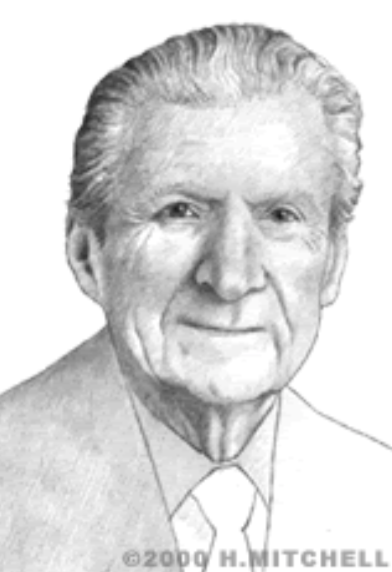Leslie Geddes
Leslie A. Geddes was an electrical engineer and physiologist who discovered the best places on the human chest for defibrillation or pacing, methods for restoring the proper rhythm of the heart. He has over 20 patents related to the treatment of diseases of the heart and lungs, and trained an entire generation of biomedical engineers.
Geddes was born in Port Gordon, Scotland on May 24, 1921. He demonstrated a love of electronics even before his family moved to Quebec, Canada when he was still a child. At age 14, he became the youngest amateur radio operator in Canada. Geddes attended McGill University in Montreal, intending to become a doctor, like his father. After a professor convinced him to major in engineering, Geddes ended up studying and excelling in both subjects. He realized he could have a career applying electronics to medicine. Between earning a bachelor’s degree in 1945 and a master’s degree in electrical engineering in 1953, Geddes conducted research in neurology at McGill University’s Faculty of Medicine.
Geddes joined Baylor University's Medical College, in Houston, where he worked as a biophysicist and then became a professor after earning his doctorate in 1959. Many of Geddes' innovations at Baylor used electrodes to monitor the human body. For example, he developed the first clinical electromyograph (EMG), an electrical test used for diagnosing nerve damage. Geddes also invented a respiratory monitoring system for NASA, which was later modified to detect apnea, a sleep-related breathing disorder, in newborns. Geddes even modernized Baylor's medical pedagogy, using a new recording device to introduce medical students to cardiology.
Geddes had already won a number of honors by the time he was recruited by Purdue University in 1974, becoming Showalter Distinguished Professor of Bioengineering, and Founding Director of the Hillenbrand Biomedical Engineering Center. At Purdue, Geddes concentrated on cardiovascular devices. In 1982, Geddes and two colleagues patented a device that detects and corrects potentially lethal cardiac arrhythmia, an irregular heartbeat. In 1986, Geddes co-patented a pocket-sized, personal electrocardiograph, which records the electrical activity of a heart at rest. Geddes was also granted many patents for improvements to the cardiac pacemaker, a device placed under the skin to help control a person’s heartbeat. He invented the first model to increase its pace automatically when its wearer exercises.
Outside the cardiovascular realm, Geddes earned three patents in the 1990s for a new biomaterial, small intestine submucosa, which when grafted onto tissue in need of repair completely remodels itself to mimic that tissue whether it’s a blood vessel, tendon, or stomach lining. Geddes has earned many patents for both specialized and everyday inventions, like a baby pacifier that can deliver medication.
Geddes is also revered for his innovations in medical therapy and theory. He discovered and demonstrated precisely the optimal sites on the chest for defibrillation or pacing. He developed "electroventilation," a safer technique of artificial respiration by electrical stimulation of the nerves of the chest and diaphragm. With three colleagues, he propounded the "three laws of defibrillation," which have saved countless patients from muscular tissue damage to the heart.
In 1968, he wrote the classic textbook "Principles of Applied Biomedical Instrumentation;" he has co-authored or co-edited twenty other books, and has co-authored over 725 scholarly articles. Geddes received many accolades for his transformative work in the biomedical field. He received the IEEE Engineering in Medicine and Biology Society Career Achievement Award in 1986, the Outstanding Educator Award of the American Society for Engineering Education in 1989, the IEEE Edison Medal in 1994, and the 2006 National Medal of Technology by President George W. Bush.
Geddes passed away on October 25, 2009 in West Lafayette, Indiana.


